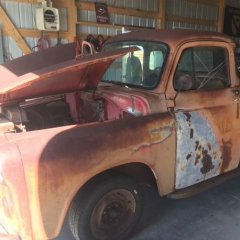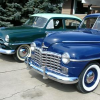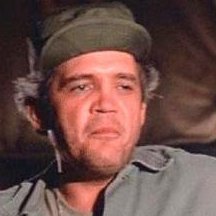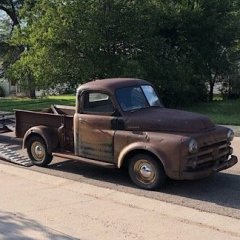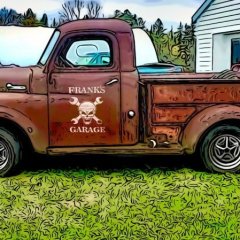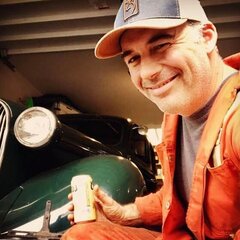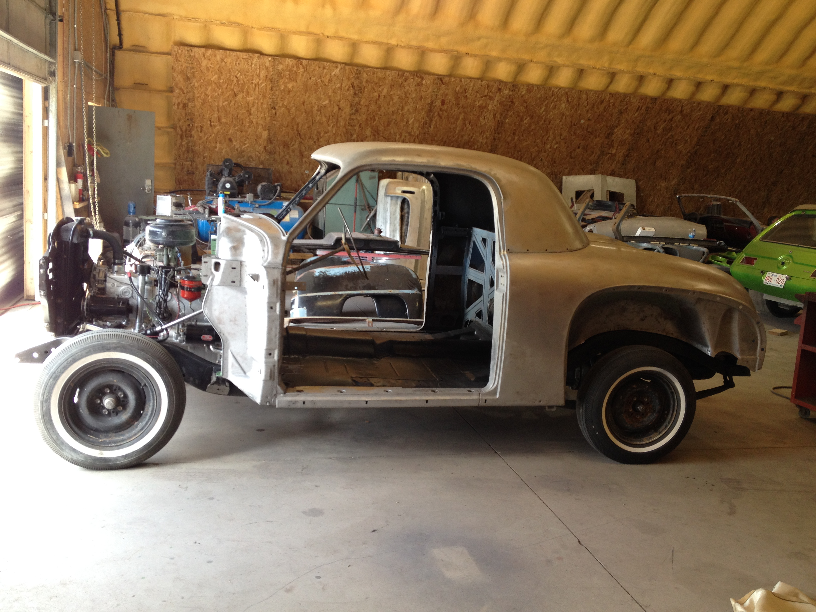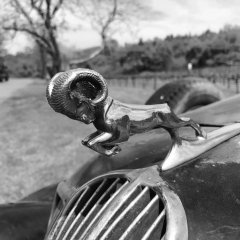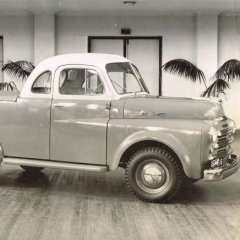Leaderboard
Popular Content
Showing content with the highest reputation on 01/21/2020 in all areas
-
You got yourself a Dana (Spicer) 44. Solid axle with a great supply of replacement and upgrade parts options. If you doing anything with internals, verify the spline count, there was a change in the count in the mid to late 90's. Are you going to use the parking brake on the trans or the rear axle?2 points
-
A perk of my work location. There are various facilities that I have access too. The Auto Craft Shop required a safety test to get a card to use it, they have 25-30 bays, most with lifts, various large tools that can be used or rented, 2 paint booths, tire machines, alignment machine etc. You just pay for hourly bay rental, and certain additional services/tools. I'll be doing the block washing my self by loading into washer.1 point
-
Last night I found Randy's Worldwide site that shows a listing for for what looks like my axle and it's listed as a 99-04 Dana 44HD Grand Cherokee. This diff came out of a 97 Grand Cherokee and has the narrow WMS compared to the 99-04 which is something like 5" wider. I think what the real story is Jeep used a Dana 44 in the rear and a Dana 35 for the front axle on the Grand Cherokee's. I plan on using the original transmission mounted parking brake. I went to a lot of effort finding all the rights and getting the band relined so I'm sticking with it I will be pulling the axles so I can replace the axle seals so I'll check spline count at that time. Thanks! Brad1 point
-
can't blame you there. I have stock wheels on most of my cars.1 point
-
Stock 16" wheels with stock hub caps. I like the look....1 point
-
1 point
-
Very cool project. I have a 38 RD that I’m planning on something similar for. I'm interested in what you plan on doing to the frame to support the, I’m guessing 400ish hp, Hemi engine. Are you going to use the frame as is? Box the whole frame? Or maybe just box the front half?1 point
-
Mind your balls. The accelerator pump chamber has two check valves comprised of two captured balls which allow the pump to creat suction and pressrue. They are held in place by little pressed metal slotted domes. When released the like to jump out, roll of the work table and take refuge in the deepest darkest corner of your shop. If you have one of those magnetic parts trays they are of good use during a rebuild.also usually the balls are slightly different size so mark their location before freeing them. Also the tiny little hair pin linkage retaining pins like to follow the same trail the check balls blaze. Pretty simple carbs over all. Juts be carful with the small bits and pieces.1 point
-
Good luck with this procedure. I would like to see how it was put on at the factory1 point
-
Looks like the pt master cyl will work. Will build an adapter this week.1 point
-
Alright, today went sideways........ Water valve to the sink leaking in the master bathroom. Replaced the leaking cold and hot water valves, that project got done. With a little daylight left I pulled out the head assembly for some cleaning with the wire brush on the grinder. Thanks to conversations with bkahler, I may start a trend for the C series with putting in a brake booster set up for my MC, when the time comes. I didn't get measurement needed today, cuz my step son showed up out of the blue. Here are pics of some progress on the head assembly........ The surface rust is from running the hose through coolant ports on the head to flush it out and letting it sit on a towel for 2 weeks. Haven't got all the paint or carbon out yet, but was a good start......1 point
-
1 point
-
According to my old Motors manual a 1954 Plymouth 6 cyl had a Carter BBS carb. I have 1 on my 1954 Ply engine, as well I have 2 spares. Simple carbs. Not hard to set up or rebuild. Seek out options on the internet if you like. They are out there. My spare carbs here on the left and centre in the pic are the same Carter BBS carb.1 point
-
1 point
-
I've enjoyed reading of your progress thus far. Im in a similar place with my 36 Dodge P/U. Keep up the posts.1 point
-
What is the proper response? Spent today rounding up items to take for powder coating and meeting with the builder who will help with this project. Will continue removing parts until the week of January 12, when I will take the chassis to Grand Junction for sandblasting. Plan to start with modernizing the chassis and installing the engine and transmission. Body pieces will be added as they are finished. When completed, the truck should appear as a restored 1938 Dodge Pickup, but with updated drive train and running gear for current roads and speeds. Personally, I'm not interested in spending tens of thousands of dollars rebuilding a 75-horsepower truck that will travel at 45-miles-per-hour in today's traffic. If anyone is interested in following this build, I can continue. Same goes for the photos of my collection. If not, I can stop as fast as I can start. Thank you. Tom Anderson1 point
-
Ok a 1952 Pilothouse truck diff is 62 1/4" wide from where the wheel bolts too. It is an 81/4" diff. It looks the same as the 8 3/4" in this chart. This is an 8 1/4" diff. The easyest way to tell the difference between 8 1//4" and 8 3/4" is to count the nuts (bolts, studs whatever) that hold the pumpkin ( carrier whatever) in. 8 1/4 have 11 nuts, 8 3/4 have 10. The other way to tell is the two top nuts are closer together on an 8 3/4 than they are on an 8 1/4. Taperd axles (where the drum goes on) were used on 8 3/4 diffs from 57 to 64. Flanged axles started in 65. There are also 3 pinion sizes from 57 to 72 but thats an other story. Sorry for pinching the pics from another poster but they are better than the ones I have. Forgot, there were some 8 3/4 that had an 4" pcd instead of the usual 4 1/2" pcd. They are rare but it pays to check.1 point

